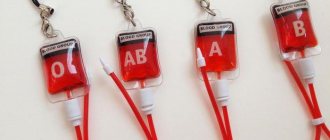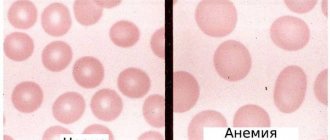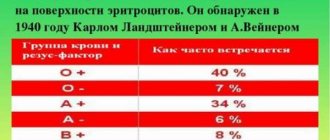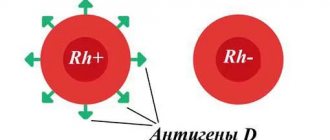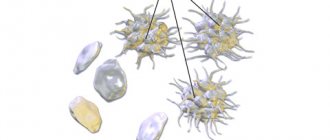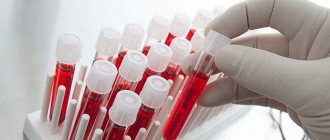It is no coincidence that physiologists call blood the internal environment of the body. It interacts with all organs and performs many vital functions. Sometimes these functions are impaired in cancer patients. The reasons are different: a malignant tumor itself, side effects of drugs, serious surgical interventions, bleeding, severe concomitant diseases, lesions of the red bone marrow. If the problem cannot be solved with medications, the patient is indicated for a transfusion of blood components.
Blood has a complex composition. Its liquid part, plasma, is a “cocktail” of electrolytes, albumin, glucose, enzymes, antibodies, coagulation factors and other substances. Blood cells (formed elements) float in this solution: red blood cells deliver oxygen to tissues and carry away carbon dioxide, white blood cells provide protection for the body, platelets help stop bleeding.
Most often, the patient does not need all these components at once. For example, in case of immunodeficiency only leukocytes are required, in case of anemia - erythrocytes. Therefore, whole blood is rarely transfused nowadays. Typically, its use is a last resort when the patient has both a reduced blood volume and red blood cell count, and plasma substitutes and blood components are not available.
- Red blood cells (packed red blood cells)
- Platelets (platelet mass, platelet concentrate)
- Leukocytes (leukocyte mass)
- Fresh frozen plasma
- Cryoprecipitate
Red blood cells (packed red blood cells)
Red blood cell mass
What it is? Red blood cells are obtained by removing part of the plasma from the blood using a centrifuge. Almost all red blood cells are preserved in the preparation, and some leukocytes and platelets are preserved; their quantity depends on the centrifugation method. The average volume of one serving is 280 ml, the hematocrit (the ratio of the volume of formed elements and plasma) is 0.65–0.75, the hemoglobin content is 45 g per dose or more.
In what cases is it used? For acute and chronic blood loss, anemia caused by various reasons:
- Acute and chronic bleeding, including large blood loss during surgery.
- Impaired hematopoiesis due to a malignant tumor, damage to the red bone marrow (for example, with leukemia), side effects of radiation therapy, chemotherapy.
- Hemolysis is the destruction of red blood cells in the bloodstream.
- Severe iron deficiency anemia.
- Intoxication, severe infections.
- Severe disorders of the digestive system.
Transfusion of red blood cells for acute blood loss is carried out when the level of hemoglobin in the patient’s blood drops significantly and symptoms such as shortness of breath, pale skin and mucous membranes, and rapid heartbeat occur. For chronic blood loss, the indications are a hemoglobin level below 80 g/l and a hematocrit below 0.25.
Red blood cells with the buffy platelet layer removed
What it is? This is the same red blood cell mass, only more “clean”; 20–60 ml of the buffy platelet layer has been removed from it. The average serving size is 250 ml. The content of leukocytes in it does not exceed 1.2 × 109, platelets - 20 × 109. Hematocrit 0.65–0.75, hemoglobin content at least 43 grams per serving.
In what cases is it used? The indications are the same as for transfusion of regular red blood cells, but there are some features. Red blood cells with the buffy coat removed are less likely to cause some complications after transfusion, so they are more preferable for patients who have previously experienced such complications. With repeated transfusions, the risk of sensitization of the body to leukocyte antigens and infection with cytomegalovirus infection is lower.
Erythrocyte suspension
What it is? Red blood cell mass from which plasma has been removed and a weighing solution has been added instead. Most often, it contains sodium chloride, mannitol, glucose and adenine dissolved in water. The hematocrit of the erythrocyte suspension is 0.5–0.7. One serving should contain at least 45 g of hemoglobin. There is also an erythrocyte suspension with the buffy platelet layer removed.
In what cases is it used? The indications are the same as for red blood cells. Due to different combinations of anticoagulants and weighing solution, the shelf life of the drug can be increased.
Washed red blood cells
What it is? Red blood cells, maximally purified from leukocytes, platelets and plasma components. First, red blood cells are prepared and purified from leukocytes, platelets, and plasma. Then the red blood cells are treated with an isotonic solution at a temperature of +4 degrees. The hematocrit of the drug may vary, but is usually between 0.65 and 0.75. A serving should contain at least 40 grams of hemoglobin.
In what cases is it used? Transfusion of washed red blood cells is indicated in the same cases as red blood cell transfusion if the patient has one of the following conditions:
- Post-transfusion complications (except for hemolysis - destruction of red blood cells) after previous transfusions of blood components.
- Sensitization (hypersensitivity) to leukocyte and platelet antigens, plasma proteins and tissue antigens.
- Massive transfusion syndrome is a complication that develops as a result of the fact that a lot of citrate (a blood preservative) and toxic substances that accumulate in the drug during storage enter the patient’s body along with blood components.
- Severe anemia in combination with renal and liver failure.
- Antibodies to immunoglobulin A in plasma.
- Paroxysmal nocturnal hemoglobinuria is a rare pathology in which red blood cells are destroyed and hemoglobin appears in the urine.
Red blood cells depleted of leukocytes
What it is? Red blood cell mass from which leukocytes have been removed as much as possible. It should contain no more than 1x106 leukocytes and at least 40 grams of hemoglobin per serving.
In what cases is it used? Red blood cells depleted of leukocytes are transfused to patients instead of regular red blood cells when necessary:
- Avoid complications due to the presence of anti-leukocyte antibodies in the recipient’s body.
- Prevent the development of an immune response against leukocyte antigens during multiple transfusions.
- Prevent infection with cytomegalovirus infection.
Cryopreserved red blood cells
What it is? Red blood cells that have been frozen within a week after receiving from the donor and stored at a temperature of minus 60–80 degrees. Before transfusion, they are thawed, washed and diluted in an isotonic solution or a special weighing solution. The volume of a portion of the drug must be at least 185 ml, it must contain at least 36 grams of hemoglobin, hematocrit - 0.65–0.75. If maintained at the right temperature, cryopreserved red blood cells can be stored for at least 10 years.
In what cases is it used? Freezing and storing red blood cells is expensive, so this blood product is used only in extreme cases:
- If the patient has a rare blood type and many antibodies, due to which the blood of most donors is not suitable.
- If you need red blood cells that are not dangerous in terms of infection with cytomegaloviruses, and there is no way to get it in any other way.
- Sometimes it is possible to prepare the patient’s own blood for transfusion in advance - that is, perform an autotransfusion.
Red blood cells obtained by apheresis
What it is? Red blood cells - alone or in combination with other blood components - are isolated from the donor's blood, which is passed through a special apheresis machine. Whatever is left is returned to the donor's body. A special solution is added to the resulting red blood cells. Serving volume and hematocrit may vary, but the hemoglobin content should be at least 40 grams per serving.
In what cases is it used? The indications are the same as for red blood cells.
Fake blood from flour
Fake blood can be made completely real in appearance! No one will even determine that you are using fake blood, because it will be very voluminous. To do this you will need:
- Flour - 1 tbsp.
- Water - 1 glass (240 ml)
- Food coloring (red) - 2 tbsp.
Take a small saucepan and pour 1 cup of water into it. Add 1 tablespoon of flour to the water and whisk the mixture to break up any chunks. You need to dissolve the flour in water. If you don't have a whisk, you can use a fork to quickly stir the water and flour.
Heat the mixture. Turn the switch to maximum heat and hold the pan until the water and flour begin to boil. Then reduce the heat to medium-low to reduce the simmer. Boil the mixture for 30 minutes. Turn off the heat and let cool. Preparing this mixture will make your fake blood voluminous.
Read also: Stances with a two-handed sword
Dilute the cooled mixture with dye and mix the paint thoroughly until the color is completely uniform. You can add more dye for a brighter blood color.
Platelets (platelet mass, platelet concentrate)
Recovered platelets
What it is? A drug that is obtained from whole blood. It contains most of the platelets: 45-85x109 per 50-60 ml of resuspension medium, some leukocytes (0.05-1x109) and erythrocytes (0.2-1x109). A “standard” serving for an adult includes platelet counts obtained from 4 to 6 units of whole blood.
In what cases is it used? The main indications for transfusion of reconstituted platelets:
- To prevent bleeding if the platelet level in the patient’s blood is reduced to less than 10,000/μl.
- For the prevention of bleeding, if the patient is planning to have a central venous catheter installed, in case of plasma bleeding disorder and sepsis - when the platelet level is below 20,000/μl.
- To prevent bleeding, if a diagnostic lumbar puncture is planned on a routine basis, surgical intervention is performed if the platelet level is below 50,000/μl.
- To prevent bleeding, if it is necessary to install or remove an epidural catheter - when the platelet level is below 80,000/μl.
- To prevent bleeding if surgical intervention on the central nervous system is planned - when the platelet level is below 100,000/μl.
- If the platelet count is below 30,000/mcL and there is prolonged nosebleeds, bloody vomiting, and black tarry stools due to blood (melena).
- When the platelet level is below 50,000/μl, if there is severe bleeding accompanied by impaired blood circulation, severe internal bleeding that impairs the functions of internal organs.
- With platelet levels below 100,000/µl and bleeding in the central nervous system and eyeball.
- After massive transfusions of other blood components, when due to severe dilution of the blood, the number of platelets in it decreases.
Platelets obtained by apheresis
What it is? A thromboconcentrate obtained by “purifying” the donor’s blood using an apheresis machine (cell separator). In one procedure, 200-800×109 platelets are obtained from one donor. The drug also contains a certain amount of leukocytes and erythrocytes. The remaining blood components are returned to the donor's body.
In what cases is it used? Indications are similar to those for regular platelet transfusion. Apheresis-derived platelets are preferred for patients with anti-HLA, anti-HPA antibodies.
Platelets depleted of leukocytes
What it is? This is platelet mass or platelets obtained by apheresis, maximally purified from leukocytes.
In what cases is it used? This blood product is used for the same indications as thrombomass in the following cases:
- With multiple platelet transfusions.
- If the patient is planning a red bone marrow stem cell transplant.
- If it is necessary to avoid infection with cytomegalovirus infection in patients with immunodeficiency or after organ transplantation.
Washed platelets
What it is? Platelets that are maximally purified from blood plasma and are in physiological solution.
In what cases is it used? This blood product is used for the same indications as thrombomass in the following cases:
- If the patient has antibodies to plasma proteins, especially immunoglobulin A.
- If the patient experiences severe allergic reactions after a blood transfusion.
Cryopreserved platelets
What it is? Platelets obtained by apheresis and frozen with the addition of special substances - cryoprotectors. Freezing must be done within 24 hours after the platelets are received from the donor. They are stored at a temperature of minus 80–150 degrees.
In what cases is it used? The indications are the same as for platelet transfusion. Platelets are frozen primarily in order to have a drug on hand that is HLA and/or HPA compatible with the recipient when needed.
A proven method: how to make blood at home
Read the recipe for artificial blood online:
- 1 tablespoon flour
- red (2 tablespoons) and green (just a little, sprinkle on eye for tint) food coloring
- 1 glass of water
- maple syrup
But the first couple of ingredients are okay, you can find them within a radius of 200 meters, but you were too lazy to look for maple syrup, so they replaced it with sugar syrup (dissolved sugar in hot water).
If in steps:
- boil water
- pour sugar into it until it has a viscous consistency (by eye) to make a syrup, but do not overdo it
- add flour and stir thoroughly. This ingredient gives the blood a texture and makes it no longer transparent (like real blood)
- Well, at the very end, add red dye and mix
- if it seems that the liquid is very bright, then add a little green dye
- cook it all for about 30 minutes, but not so that it boils, but so that there are bubbles on the surface
Well, that's basically all. If you need more artificial blood than 1 glass, then increase the ingredients proportionally and you will be happy.
There are several more options for creating artificial blood at home, but we have not tested them in practice.
Leukocytes (leukocyte mass)
Granulocytes obtained by apheresis
What it is? Granulocytes are a type of white blood cell that get their name because they contain granules when examined under a microscope. These are all those cells that protect the body from infections and are not lymphocytes. Their main function is phagocytosis; they “swallow” and destroy foreign agents that enter the body. The volume of a portion of the drug is no more than 500 ml, it must contain at least 10 × 109 granulocytes. The drug is obtained by apheresis.
In what cases is it used? Leukocyte transfusions are necessary for infectious complications such as sepsis, necrotizing enteropathy, pneumonia, if antibiotic treatment is not effective, and the level of granulocytes in the patient's blood is below 0.75 × 109/L.
Fake blood made from beets and gelatin
To make fake blood, you can use simple and cheap ingredients - beets and gelatin (can be replaced with starch). Use about 15 grams of gelatin per liter of water, although the instructions require 25, otherwise you will get a too thick consistency. The gelatin does not need to be stirred thoroughly, as the clots will add even more realism.
Grate the beets on a very fine grater and place in a saucepan. Pour in water so that there is about a centimeter of water above the puree. Cook for 5-7 minutes over low heat, and then strain through cheesecloth. All you have to do is mix gelatin with beet juice and your makeup is ready!
Fresh frozen plasma
What it is? Plasma is the liquid part of blood. It is obtained from whole blood by centrifugation or plasmapheresis. It contains: albumin, immunoglobulins, blood clotting factors. The finished product is frozen and stored at a temperature of minus 18–25 degrees for 3 months or below minus 25 degrees for 12 months. Freezing helps preserve blood clotting factors.
In what cases is it used? Fresh frozen plasma is transfused when a patient's blood does not have enough clotting factors. Main indications:
- Liver diseases.
- Vitamin K deficiency.
- Overdose of certain anticoagulants - drugs to reduce blood clotting.
- Disseminated intravascular coagulation syndrome.
- Coagulation disorders as a result of transfusions, severe dilution of blood.
- Hereditary deficiency of blood clotting factors.
- Thrombotic and thrombocytopenic purpura.
- Hemolytic-uremic syndrome.
Useful tips
We figured out how to make artificial blood at home. Now it’s worth considering more sophisticated options for creating believable substances - for example, blood clots. They convey the holiday mood as much as possible and add realism to the character. So, for preparation you will need:
- Wallpaper glue or gelatin (the first option is undesirable for sensitive skin).
- Aniline dyes (most often used for fabric) or food dyes in red, blue and green.
- Water.
First you need to make a small amount of red solution - to do this, mix water and red dye, as well as a few drops of blue. Next, pour out the gelatin in a thin layer, and the glue in small piles and sprinkle it all with artificial blood. By carefully pouring the gelatin, you can get very realistic clots and blood crusts. In order to securely attach them to the surface of the body (for example, the knee or face), it is best to use sandarach glue.
To create realistic clots, you can use dyes of other colors; you can get light green alien blood or a gray-brown mass similar to the contents of a skull.
Cryoprecipitate
What it is? Cryoprecipitate is the name given to cryoglobulin proteins that precipitate and form a gel when fresh frozen donor plasma thaws in a certain manner. Cryoprecipitate can be frozen, in the form of a yellow mass, and dried, in the form of a powder for dissolution in water.
In what cases is it used? The drug contains blood clotting factors. It is used for hemophilia, disseminated intravascular coagulation and some other pathologies.
Euroonko cooperates with one of the largest donor blood banks in Russia. We conduct blood transfusions on the basis of a license for “transfusiology in outpatient and inpatient settings”, which was issued to our clinic by the Moscow Department of Health. We have everything necessary to perform transfusion as quickly as possible, in compliance with modern standards and recommendations.
Book a consultation 24 hours a day
+7+7+78
Bibliography:
- Sanjeev Sharma MD; Poonam Sharma, MD; and Lisa N. Tyler, MD, Creighton University School of Medicine, Omaha, Nebraska. Transfusion of Blood and Blood Products: Indications and Complications. Am Fam Physician. 2011 Mar 15;83(6):719-724.
- Joint United Kingdom (UK) Blood Transfusion and Tissue Transplantation Services Professional Advisory Committee. 3.3: Blood products.
- All-Russian public organization "Russian Association of Transfusiologists". Donor blood and its components: characteristics and quality control. II. Red blood cells (packed red blood cells). Organization Standard No. 2, date of adoption 04/01/2005.
- All-Russian public organization "Russian Association of Transfusiologists". Donor blood and its components: characteristics and quality control. III. Red blood cells with the buffy platelet layer removed. Organization Standard No. 3, date of adoption 04/01/2005.
- All-Russian public organization "Russian Association of Transfusiologists". Donor blood and its components: characteristics and quality control. IV. Erythrocyte suspension. Organization Standard No. 4, date of adoption 04/01/2005.
- All-Russian public organization "Russian Association of Transfusiologists". Donor blood and its components: characteristics and quality control. V. Erythrocyte suspension with the buffy platelet layer removed. Organization Standard No. 5, date of adoption 04/01/2005.
- All-Russian public organization "Russian Association of Transfusiologists". Donor blood and its components: characteristics and quality control. VII. Red blood cells depleted of leukocytes. Organization Standard No. 7, date of adoption 04/01/2005.
- All-Russian public organization “Russian Association of Transfusiologists”. Donor blood and its components: characteristics and quality control. VIII. Cryopreserved red blood cells. Organization Standard No. 8, date of adoption 04/01/2005.
- All-Russian public organization "Russian Association of Transfusiologists". Donor blood and its components: characteristics and quality control. IX. Red blood cells obtained by apheresis. Organization Standard No. 9, date of adoption 04/01/2005.
- All-Russian public organization "Russian Association of Transfusiologists". Donor blood and its components: characteristics and quality control. X. Platelets: restored. Organization Standard No. 10, date of adoption 04/01/2005.
- Empendium.com. Platelets recovered from a blood unit (obtained manually).
- All-Russian public organization "Russian Association of Transfusiologists". Donor blood and its components: characteristics and quality control. XI. Platelets obtained by apheresis. Organization Standard No. 11, date of adoption 04/01/2005.
- Empendium.com. Platelets (platelet concentrate) obtained by automatic apheresis.
- Empendium.com. Washed platelets.
- All-Russian public organization "Russian Association of Transfusiologists". Donor blood and its components: characteristics and quality control. XV. Cryopreserved platelets obtained by apheresis. Organization Standard No. 15, date of adoption 04/01/2005.
- All-Russian public organization "Russian Association of Transfusiologists". Donor blood and its components: characteristics and quality control. XVI. Granulocytes obtained by apheresis. Organization Standard No. 16, date of adoption 04/01/2005.
- Ministry of Health of the Republic of Belarus. Transfusion of donor blood and its components. Instructions for use. Republican Blood Transfusion Station, Belarusian Medical Academy of Postgraduate Education, Research Institute of Hematology and Blood Transfusion. Authors: E.L. Svirnovskaya, V.S. Bondarenko, I.V. Brovko, V.N. Gapanovich, V.V. Klimovich, L.A. Smirnova, I.I. Kanus, T.V. Budko.
- MSD Manual. Professional version. Blood products. By Ravindra Sarode, MD, University of Texas Southwestern Medical Center Latest full review/edited November 2021, Ravindra Sarode, MD.
- MSD Handbook. Paroxysmal nocturnal hemoglobinuria (PNH).
- All-Russian public organization "Russian Association of Transfusiologists". Donor blood and its components: characteristics and quality control. XII. Fresh frozen plasma. Organization Standard No. 12, date of adoption 04/01/2005.
- All-Russian public organization "Russian Association of Transfusiologists". Donor blood and its components: characteristics and quality control. XIII. Cryoprecipitate. Organization Standard No. 13, date of adoption 04/01/2005
Is it possible to make artificial blood at home that looks indistinguishable from real blood?
Yes, at home you can make a liquid that will resemble human blood not only in color, but also in consistency. For this purpose, you can use products suitable for human consumption, or you can mix non-toxic chemical compounds.
Read also: Dirty, rusty tap water
You should be careful with them. They cannot always be applied to the skin, much less tasted. More often, such recipes are intended for making blood, which is used as decoration for clothing or props.
Before you start getting acquainted with recipes for preparing blood, you need to familiarize yourself with the rules for its use:

